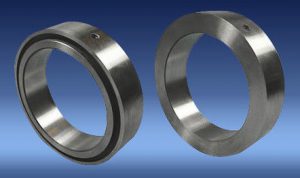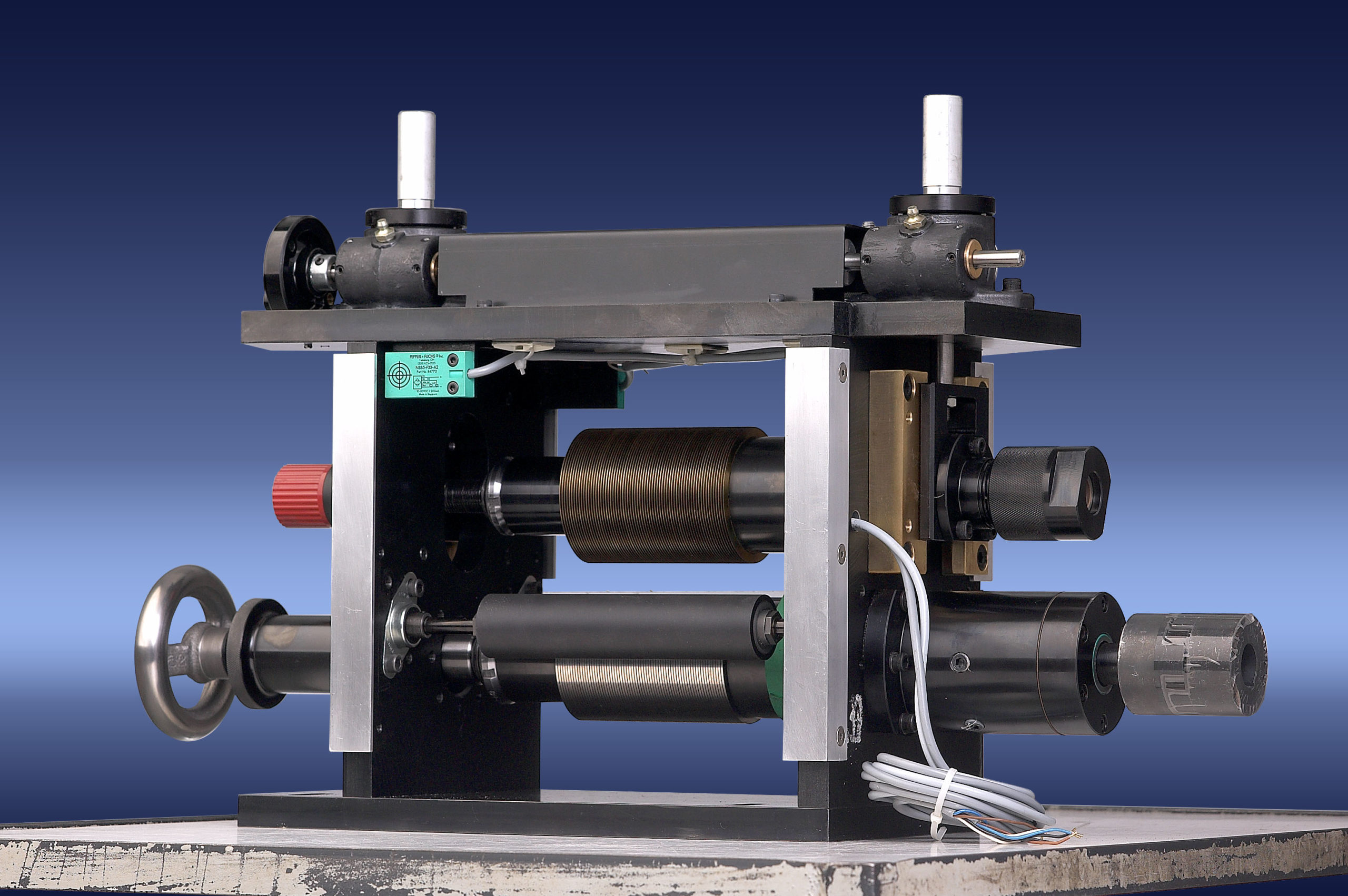
As we have mentioned in previous blog posts, there are two types of shear cut system designs. The first is a shaft-to-shaft or “shafted” set-up, while the second is using a pneumatic holder for the top axis. So, in this blog, we will discuss shafted vs. pneumatic shear cut holders and the differences between the two.
Although both designs are common in the market and industry, they each present certain advantages and limitations.
In addition, we will also mention some of the common applications for each one.
Shaft-to-Shaft Basics
The shaft-to-shaft design is a system in which a fixed shaft has both the top and bottom axis mounted to it. As a result, these shafts come in contact with each other. The top knives are mounted using a collar assembly, which contains a spring. This spring maintains the blade contact as much as possible with the bottom knife.
The different configurations for the mounted and locked collars and bottom knives are as follow:
- Set screw
Set Screw
- Eccentric locking (uses a special wrench to lock them into place)
- Plain bore (uses either an air shaft or spacers to lock them into place).
The use of collars on the top assembly and the mounting of the bottom knives in the same shaft that will drive them (instead of using individual motors) allows for narrower slit widths. The achievable slit widths can go as narrow as 0.5 mm (0.0196”) if a micro slitting system is used, like the one shown on the picture below:
Shafted Design Disadvantages
But this type of system has a disadvantage. Since all top knives are mounted on a common shaft, as knives are reground to different diameters, each knife cannot be adjusted to the proper overlap. Budget, minimum slit width, and space constraints usually define the use for this type of slitting. It is difficult to modify without requiring significant changes to the machine.
Another disadvantage of shafted vs. pneumatic systems is the cant angle. Shafted systems do not allow for a defined cant angle to be present in each slitting station. The only way to attain a cant angle in a shafted setup is by canting the entire shaft; which results in a various angle across each cut.
However, sometimes the spring experiences too much of a push-back force. This force is from the material as it goes through the slitting station. The spring cannot handle the load, therefore the knife loses the cutting force and location in the material.
Some of the most common applications in which a shafted system are as follows:
- Label printing and converting
- Plastic film converting
- Tape converting
And below is a picture showing a shafted set up:
Pneumatic Holder Design vs. Shafted Holder
The other type of design for a shear cut system is a pneumatic holder on the top axis. This type of set-up allows the holders to be mounted either using a dovetail-bar or linear rail adapter. This enables each holder to move laterally on the top axis, positioned independently of the bottom knife.
Pneumatic Holder Advantages
However, this type of set-up has limitations regarding the minimum slit width. As it is subject to the width of the holder or the width of the bottom knife motor. But it has the advantage of a defined and constant cant angle. Because a defined cant angle plate is mounted on the back of the holder, the knife will last longer and provide improved cut quality.
Another advantage of this kind of system is the ability to adjust the overlap for each cut. As all of our holders have a micrometer or gauge. This allows our users to define and modify the overlap amount that the top knife will have after pneumatically engaging the holder. As a result, it enables users to set an optimal point, avoiding some of the issues experienced when an excessive overlap is present.
In addition, another advantage that pneumatic holders deliver is the ability to easily change over slit widths without having dedicated tooling. The holders can move laterally on the beam.
Why not Pneumatic?
So, by now, you might be wondering why all systems do not use pneumatic holders instead of shafted set-ups? But as we have mentioned before, this might be because of the minimum slit width requirements. Or it could be because systems with pneumatic holders tend to be considerably more expensive than shafted set-up systems.
The most common applications for pneumatic holder systems are as follows:
- Paper production and converting
- Tissue production and converting
- Label production
Below is a picture of a pneumatic holder system:
Both shafted vs. pneumatic systems have pros and cons. But when possible, it is preferred to have a pneumatic holder set up for the reasons above. However, we know this is not always possible.
Are you still unsure which type of system would better fit your application? Even after reading this article? Do not hesitate to call us today! Our line of experts will gladly guide you and recommend the best type of system according to your specific needs. Follow us on LinkedIn and Facebook for more articles like this one!






